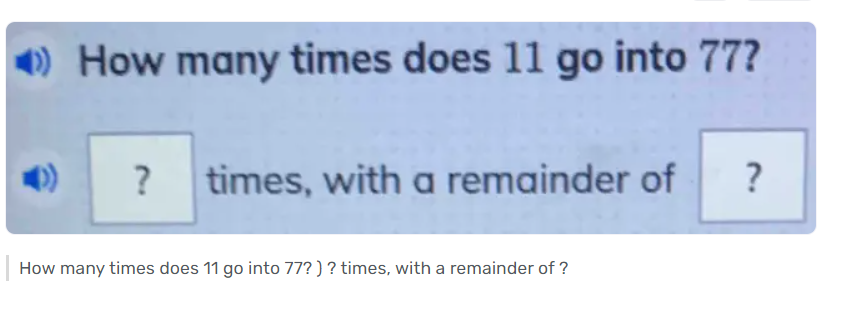Have you ever wondered how many times you can change one number into another? Understanding division and duplication can be fundamental expertise in regular day-to-day existence, whether you’re attempting to split a pizza between companions or sort out how frequently a transport course finishes a circle in a day.
In order to determine how frequently the primary number can fit into the subsequent number, we will investigate how many times does 11 go into 77 in this article. This information can be valuable in various circumstances, including planning, estimating elements for recipes, and deciding the number of units of an item to arrange for your business.
What are the Basics of Division?
For many mathematical calculations, it’s important to know the basics of division. The division is the most common way of circulating an amount into two halves. Right when we parcel a number, we are fundamentally asking the way in which frequently a particular number can go into another number.
When we carry out a division exercise, we have two primary components: the dividend and the divisor. We are essentially looking for the remainder when determining how frequently a particular number can be combined with another number. The remainder is the solution to a division issue.
Understanding the concept of remainders in division is also essential. In some cases, when we partition a number, we are left with a remaining portion. After distributing a number as evenly as possible, the remaining amount is called the remainder.
Determining the Quotient
Finding the quotient is the key to determining the number of times a particular number enters another number. The remainder is basically the aftereffect of separating one number from another.
Long Division
One technique to decide the remainder is through lengthy division. This requires subtracting the divisor from the dividend on a regular basis until you reach zero or a remainder. You can see how many times the divisor can fit into the dividend without leaving any room for error using this method.
While doing long division, it’s essential to monitor the means and record every computation to guarantee precision. Begin by isolating the furthest left digit of the profit by the divisor and record the entire number piece as the principal digit of your remainder. Then, to get the remainder, multiply the divisor by this digit and subtract it from the current number.
Proceed with this cycle with the following digit of the profit, cutting down the following digit to be remembered for the computation. Divide, multiply, and subtract one by one until you’ve gone through all of the dividend’s digits. Your quotient will be the final result.
Short Division
The short division is another way to figure out the quotient. For smaller numbers, short division is a faster and simpler method of calculating the quotient. You can quickly figure out how many times the dividend can be divided by the divisor without making any mistakes by using this method, which examines the dividend and the divisor as a whole.
To perform short division, you can count the times the divisor enters the profit’s initial not many digits and record it on paper. Continue dividing until you reach the dividend’s final digit, making adjustments to your estimate based on any remaining funds.
How to Use Gauth to Answer Questions
At the point when you really want to sort out how frequently a specific number goes into another number, Gauth is here to help. Gauth is a web-based application that can quickly carry out your mathematical calculations. You should simply follow a couple of basic moves toward finding the solutions you’re searching for.
Step 1. Input Question
The initial step is to enter your inquiry into Gauth. You might want to know, for instance, how many times 11 becomes 77. Essentially type in the numbers and the activity you need to perform. Gauth can deal with various numerical tasks, so go ahead and explore different avenues regarding various kinds of inquiries.
Step 2. Wait for Processing
The only thing left to do is wait for Gauth to process the information once your question has been entered. Gauth utilizes progressed calculations to rapidly and precisely settle numerical inquiries. This handling time is generally extremely quick, so you will not need to stand by lengthy for your outcomes.
Step 3. Obtain Result
You will receive the results once Gauth has finished processing your question. In this example, you would discover that 4 is multiplied six times by 24. You will be able to easily see the answer to your question because the results will be clearly displayed on the screen.

Sum Up
The capacity to count the times a specific number is added to another number can be a valuable device in various numerical estimations as well as in regular daily existence. If we comprehend this concept, we will be able to better plan our budgets, resolve issues, and make informed decisions. So whenever you’re confronted with isolating one number from another, make sure to consider how often that specific number goes into the other to arrive at the ideal result.
